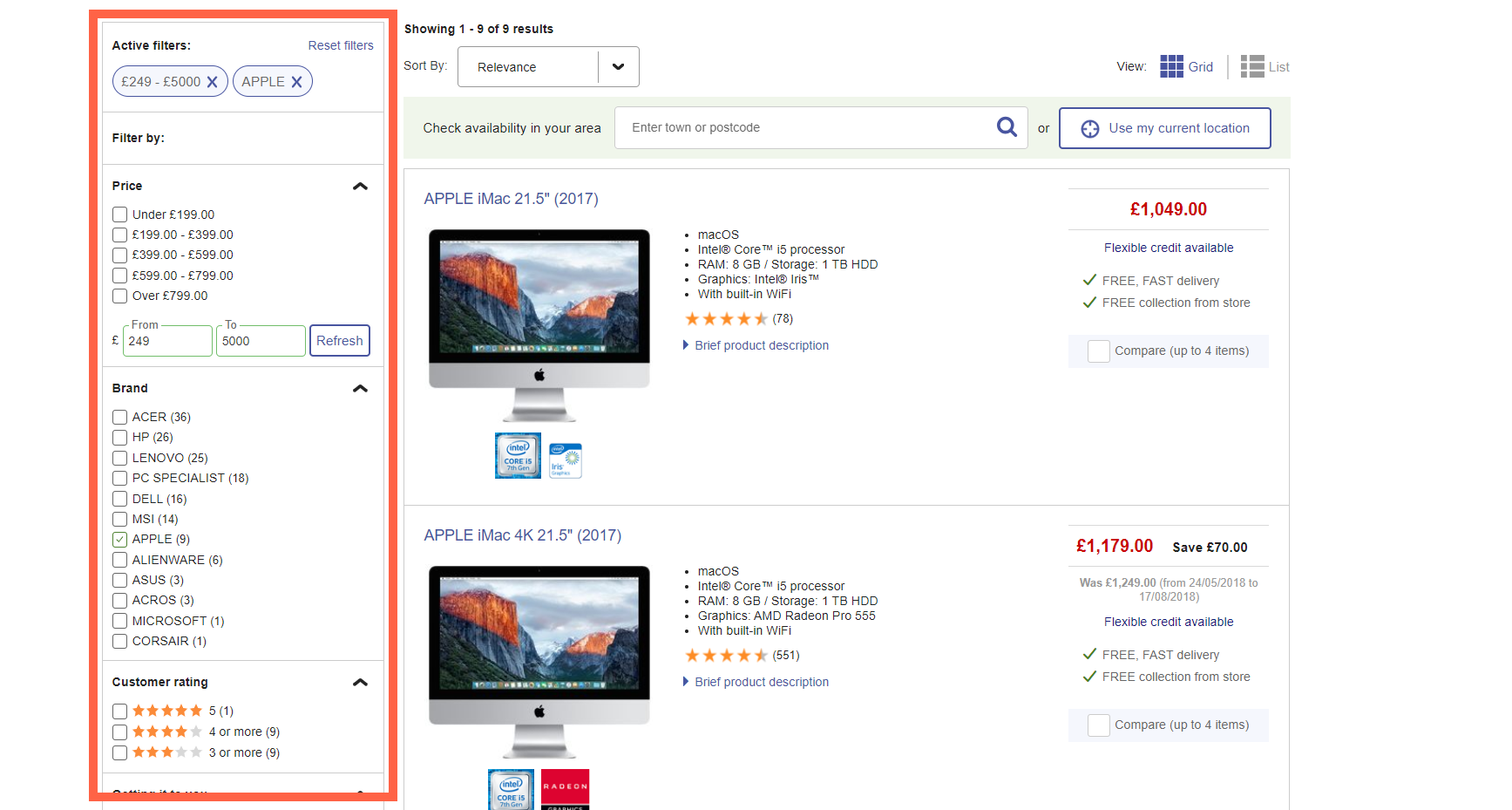We've already covered the myriad of benefits custom site search can bring to your e-commerce store – such as more than doubling conversion rates – but not all site search is created equal. How should you go about creating a site search solution that improves your customer experience and drives up sales?
1. Actually Offer Site Search Functionality
Whoa. Shocker, right? Well believe it or not, some of the biggest e-commerce sites on the web still aren't offering site search to their customers. Put simply, you can't reap the many benefits of site search without actually investing in a robust site search solution.
2. Make a Song and Dance About It
Why bother creating an awesome site search if you're not going to place it on your site in a position where users will actually see it? Time and again we've seen e-commerce sites hide their search bar somewhere in a corner, almost as if they're embarrassed by it.

Be proud of your site search. Make sure that wherever you position the search bar it's easy to locate right from your home page. With site search proven to convert more browsers into buyers, you can't afford not to show it off.
3. Label your Site Search
Not only should your search bar be in an easy-to-find location, but we recommend you label it clearly as a search box too.
Some businesses, like John Lewis, choose to label their search bars with text:

Others choose to label their site search with just the magnifying glass symbol.
Whatever you decide works best for the design of your website, labelling your search box ensures your customers understand its purpose and it increases the chances of them actually using it.
P.S Make sure you use Javascript to automatically delete the default text in your search bar once a user clicks it. We all know the annoyance caused when you have to delete the word 'search' before typing your query, so save your users the aggravation.
4. Let Users Search by Department
Allowing your customers to narrow their search by department before they've even hit enter can save them a lot of time. In the example below, ASDA lets users choose between searching their grocery products or their George clothing line.

This is particularly important for sites that stock a large range of products in different categories. A visitor to ASDA's site might search 'aubergine' and be presented with a range of clothes that are aubergine coloured – not very useful when you're trying to make moussaka!
Sure, this tip may appear minor, but you'll see the benefit in your conversion rate.
5. Offer Auto-Complete
Auto-complete may mess up of some of your text messages, but optimised for site search it can save your users valuable time and effort. Waterstones provides an excellent example of auto-complete in action:

Thanks to Google popularising auto-complete a few years back, many internet surfers now simply expect search boxes to offer suggestions. Ensure your site search is prepared to handle auto-complete to keep your customers' journeys running smoothly.
6. Showcase Product Ratings
Did you know that 85% of online shoppers trust customer reviews as much as they'd trust a recommendation from a friend? Use this to your advantage, and think about displaying product reviews in your suggested product list. People are more likely to buy products that are socially proven to be of a high quality.
7. Personalise Your Search Results
Choosing a site search platform that can personalise search results based on your users' individual preferences is a real game changer.
Such functionality is based on automated analysis of a user's clicks, the items in their basket, and their purchase history to create a custom feed of search results for each buyer.
This level of personalisation is usually only available in high-end retailers, so implementing it into your site search will really help your business elevate itself above the competition.
That's why we've spent so much time and energy perfecting our machine learning capabilities to offer a level of personalisation that's hard to beat.
8. Set a Reasonable Level of Error Tolerance
Everyone makes speeling spelling mistakes from time to time. When we write a typo into a search engine, we still expect it to understand the general gist of what we're after, or at least make sensible suggestions. But did you know that over a third of the top 50 e-commerce sites fail to return any results when even the smallest of errors is made?
Don't let your e-commerce site fall into that lower third and risk frustrating or even sending away valuable customers. Ensure that you set a reasonable level of error tolerance so users are never presented with a page of null results because of a spelling error.
9. Utilise Faceted Search
Faceted search perfectly complements the rest of your site search functionality. Facets are basically categories – price, brand, size, etc. – which your customers can use to further refine their search.
It's a particularly great tool for those customers who aren't exactly sure what product they're looking for, but have a rough idea. Say a customer is interested in buying either a Dell or Asus laptop for under £500. With faceted search, they're just a few clicks away from exactly what they're looking for.
Faceted search options increase findability, boost conversion rates, and speed up the decision making process. Read our 6 Essential Faceted Search Best Practices article for more specific advice on getting the most out of faceted search.
10. Never Stop Improving
You've set up your site search, you've implemented the tips set out in this blog, and everything seems to be working smoothly. Time to put your feet up and relax, right?
Wrong.
The trick to building a successful site search that increases your bottom line is committing yourself to constantly improving it. Once site search has been live on your website for a while, you'll find that you have a sea of user data at your disposal which can be analysed in Google Analytics. This can inform your design decisions.
Are people still not using your site search? Maybe reposition the search bar. Is there a specific product category people are always searching for? Move that category up your facet list. This continuous tweaking and improving is essential to creating stand-out site search.
Of course, site search solutions that offer machine learning capabilities can handle a lot of these improvements automatically, so it's a feature definitely worth looking out for.
Summary
Having an intelligent and speedy site search on your e-commerce store is vital for learning more about your customers and improving their experience of your store. Follow these 10 top tips and your e-commerce site search is guaranteed to surprise and delight your customers. If you're still weighing up the various site search solutions available, why not check out our cheat sheet?



